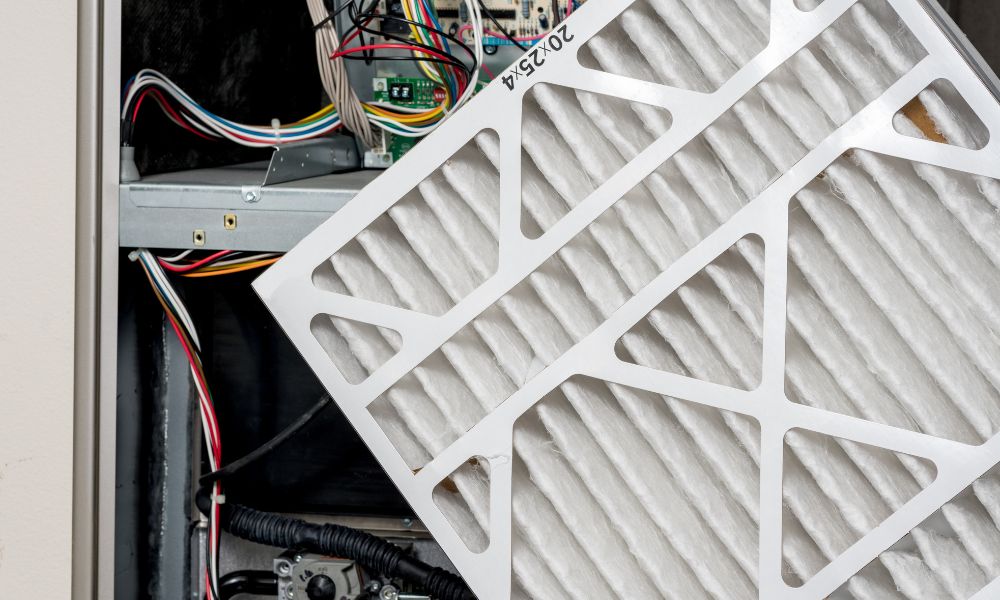On orders of $50+
On orders of $50+
On orders of $50+
On orders of $50+

Due to its warm weather and sunshine, summer is a beloved season for many. However, the elevated temperature is a double-edged sword. On one end, you have outdoor activities and general fun that you might not have access to when it’s too cold outside.
On the other hand, you have a higher heat index and increased air pollution. As a result, you may wonder, “How does a heat advisory affect indoor air quality?” To learn more, you should continue reading below!
Indoor air quality refers to the air’s condition within and around homes, buildings, and structures and how it relates to the comfort and health of their occupants. As weather, temperature, and pollutants filter through HVAC units, the air quality may fluctuate and impact the risk for indoor health concerns.
Indoor air quality can shift depending on the severity of air pollutants circulating within a space. Common air pollutants can include some of the following:
The heat index, also known as apparent temperature, calculates the environment's temperature based on how hot it feels to the human body combined with relative humidity.
Air temperature and relative humidity directly correlate with the heat index. Therefore, as temperature and humidity increase, so does the index. A higher heat index will call for heat advisories and precautions, including staying indoors.
Unfortunately, warmer temperatures are a significant factor in a chain reaction of change. Increasing air temperatures affect weather patterns, oceans, wildlife, and a person’s comfortability.
According to the EPA, most people spend the most time in their homes. The air intake may significantly impact your health in many ways.
Sweltering days are becoming more common, thus worsening indoor air conditions, especially for those without an HVAC unit to cool and filter air through their homes. More prolonged and frequent outdoor heat advisory conditions can result in higher indoor temperatures, becoming catalysts for events like extreme precipitation, storms, and flooding.
The high indoor dampness can contribute to the development of biological contaminants inside an area and the spread of indoor pests.
Climate change also contributes to increased power outages. People may need to rely on portable generators as a result. Should someone misuse a generator, it can increase the risk of carbon monoxide poisoning, promoting unhealthy indoor air quality.
Other pollutants may include the following:
Outdoor air can circulate throughout a property via a few means. Here are the three primary ones to be aware of:
The rate at which outdoor air replaces the air indoors is the air exchange rate. When little natural or mechanical infiltration is present, the air exchange rates decrease. This then contributes to higher pollutant levels.
With preventive maintenance, you can immediately improve your air quality. Here are some actions you should take.
Specific health effects are clear indicators of an indoor air quality issue, especially if they develop after moving into a new property or after completing a renovation project.
You can assess whether your home has air issues by identifying contributing sources. You can also evaluate your lifestyle and activities to identify sources of indoor pollution.
Your home and environment may need weatherizing to help combat the effects of extreme weather on indoor air quality. You can weatherize your property by doing the following things.
Home energy audits can tell you the amount of energy used and wasted to cool or heat your residence. If large amounts of cold air leak from cracks in windows and walls, your HVAC system may work harder to warm the area.
A home energy audit may identify those leaks and offer solutions to help fix areas of concern. The assessment includes a thorough analysis of each room using blower doors, gas leak detectors, moisture meters, and carbon monoxide detectors.
You can maintain indoor air quality by using the proper insulation. Insulation may also help keep your home warmer during the cooler months and cooler during high-heat occasions, optimizing your home’s energy efficiency.
If the audit identifies a leak through a door, window, or another area of your property, you may want to consider applying caulk and weather stripping cracks. Doing so will prevent your HVAC system from working overtime and decrease the risk of moisture problems developing on the property.
Speaking of moisture control, consider contacting a contractor for foundation control. Correcting moisture levels can prevent mold growth and optimize air sealing efforts.
One of the most effective ways to improve indoor air quality is to rid the area of pollutant sources or reduce their emissions within the space.
For instance, you could adjust a gas stove to decrease the number of emissions produced. You can seal or enclose sources containing asbestos to prevent particles from spreading as well.
Lowering the indoor air pollutants of your home may mean improving ventilation efforts. Consider opening doors and windows, operating fans, or running a window air conditioning unit to increase the outdoor ventilation rate.
Kitchen and bathroom fans with an outdoor exhaust feature may also remove contaminants from the immediate area and increase ventilation. This can also be an ideal time to service HVAC units and switch out filters.
Pleated furnace filters like those on our RTF webpage provide added benefits like increased energy efficiency, prevention of bacterial growth, and reduced maintenance.
With extreme heat comes poor air quality. A heat advisory can affect indoor air quality and disrupt your lifestyle. However, we at RememberTheFilter.com are here to assist you. Our polyester filters can remove small particles of indoor air pollution to ensure your home remains efficient and safe.

{"one"=>"Select 2 or 3 items to compare", "other"=>"{{ count }} of 3 items selected"}
Leave a comment